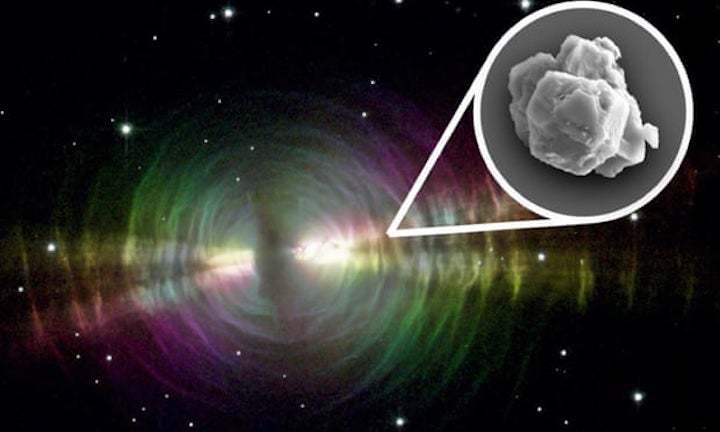Stardust that formed more than 5bn years ago, long before the birth of the Earth and the sun, has been discovered in a meteorite that crashed down in Australia, making it the oldest known solid material on the planet.
The tiny granules of stardust, shed by ancient stars as they expired, reveal clues about how stars formed in the Milky Way. The meteorite accumulated the stardust during the billions of years it spent soaring through space before it crashed down to Earth near the town of Murchison, Australia, in 1969.
“They’re solid samples of stars, real stardust,” said Philipp Heck, the lead author of a study on the particles and a curator at the Field Museum in Chicago, which acquired the largest pieces of the Murchison meteorite. “These are the oldest solid materials ever found, and they tell us about how stars formed in our galaxy.”
The meteorite was known to contain so-called presolar grains – minerals cast off by stars at the end of their lives – but it is only now that the age of the sample has been verified.
In order to date the stardust, fragments of meteorite were crushed down into a paste, which the scientists said had an unpleasant smell “like rotten peanut butter”. It was then dissolved with acid until only stardust grains remained.
The scientists analysed how cosmic ray exposure had altered the samples over time. Cosmic rays are high-energy particles that fly through space and, when they interact with solid matter, can split nuclei to form new elements. So the longer a sample is exposed, the more secondary elements are formed.
The oldest grains were dated to more than 5.5bn years ago, long before the sun formed 4.6bn years ago. The age range of the grains also intrigued the scientists: the majority were from 4.6bn to 4.9bn years ago, suggesting that a bumper crop of new stars formed in the Milky Way about 7bn years ago – the lifetime of a star typically being a few billion years.
“We have more young grains that we expected,” said Heck. “Our hypothesis is that the majority of those grains, which are 4.6bn to 4.9bn years old, formed in an episode of enhanced star formation when about 50% more stars than normal were forming.”
Helio Jaques Rocha-Pinto, an associate professor at the Valongo Observatory in Rio de Janeiro who was not involved in the latest work, described the finding as “very compelling”. Rocha-Pinto previously found evidence for a boom in star formation around the same time period, based on astronomical survey data.
“An amazing aspect of this finding is that it is based on direct measurement of decay products, while generally the evidence that you asked me about is based on indirect chronological methods, which are ultimately linked to a stellar model or statistical assumptions,” he said. “Yet, they are the main tools we have for dating stars since we cannot take them to the laboratory.”
Recent observations by the European Space Agency’s Gaia mission have revealed a possible trigger for the apparent boost in star formation. The mission uncovered evidence for a past merger between the Milky Way and an ancient dwarf galaxy called Gaia-Enceladus. The remains of the encounter, which can still be traced out in the Milky Way, are known as the Gaia sausage.
Quelle: The Guardian

